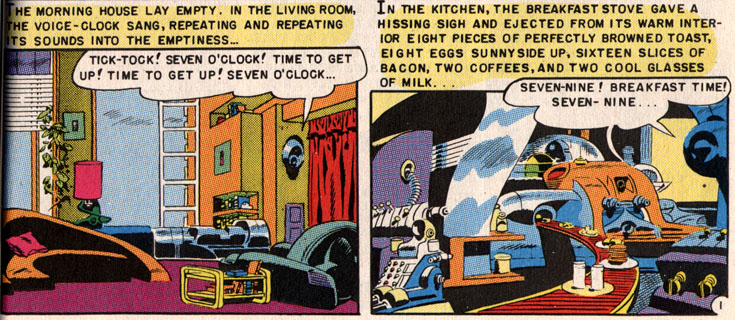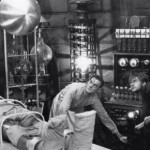As people do less and require their gadgets to do more, the idea of a house that cleans up after itself and its inhabitants moves higher on the list of technological priorities.
Such a house would be even more impressive than cheese that cleans.
To my knowledge, such a house doesn’t exist—yet—though it would certainly make Downton Abbey more interesting (and much less crowded). What we do have, though, are Ninja Blocks. If I didn’t know better, I would assume these were awesome fighting weapons—stealth bricks of some sort. But they’re not, quite.
Ninja Blocks are the latest way to control your home—and not just your devices. You can program a Ninja Block to text you when a Jehovah’s Witness is approaching your stoop, or send an alert to remind you about the soup you left simmering on the stove. It could even take a picture of your cat barfing a hairball and upload it to Dropbox. And that, I think, is really the gold standard of innovation.
A standard Ninja Kit (again, this conjures nothing but bad-ass imagery) includes a Ninja Block, which is the command center of all Ninja-ness—a “cloud-enabled” mini-computer—as well as a bunch of wireless sensors that can detect motion, door and window contact, temperature, and humidity. Customers can order however many sensors they want, depending on how many kids they’re trying to prevent from sneaking out their bedroom windows or tampering with the air conditioning, and then place them strategically wherever they need to be.
Then things get a little more complicated, because, as with everything else in life, the rest is all about the apps. The remote app, security app, and thermometer widget come free with the Ninja Kit; the rest you have to write yourself—“almost no coding knowledge needed,” assures the website. If only there was a robot house that knew how to write apps, we’d be all set.
A quick peek at the “how to” page on the Ninja Blocks website is less than reassuring, despite its goal to “make it trivial to write applications that inteact (sic) with devices,” although I have to admit that I find this kind of awesome:
$ mkdir helloNinja
I think I might make a hello ninja directory anyway, just for fun.
Once you’ve got all this stuff figured out like a true programming ninja, you can get the sensors to retrieve and communicate data to or through whatever media or channels you specify. And here I thought setting up a Nanny Cam to spy on my cat was high tech.
Apparently, a Raspberry Pi makes a viable substitute for a Ninja Block, which may end up being one of the most marketable features of this system. There’s also a way for tech-savvy customers to make their own sensors; in fact, the creators of Ninja Blocks pride themselves on their open source/open hardware philosophy, which only makes sense—after all, I could just spy on them using a Ninja Block and learn all their secrets anyway.
In the Bradbury story, the mechanized house eventually catches fire and burns down in a storm. And therein lies Bradbury’s message—not that anything man could possibly invent pales in comparison to the power and permanence of nature, but that, had there been a Ninja Block in the house, it would still be up and running. And, of course, tweeting.
























